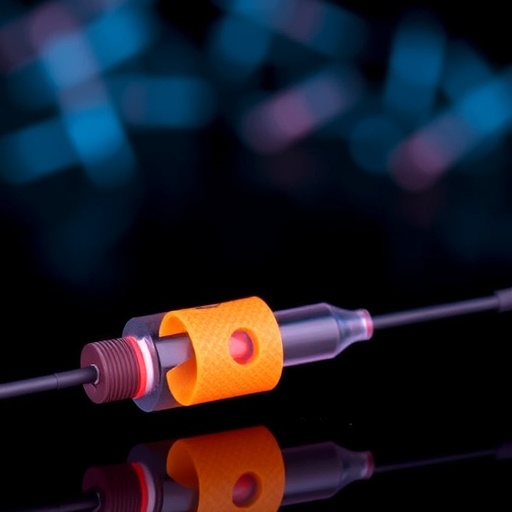In the contemporary landscape of chronic disease management, the administration of therapeutics is fraught with challenges that significantly impact patient outcomes. The traditional modes of drug delivery often fall short due to fundamental limitations such as imprecise dosage control and inadequate adherence to medication regimens. Patients may experience variable drug concentrations in their systems, leading to suboptimal therapeutic effects or even adverse events. Consequently, a pressing need arises for innovative solutions that can address these concerns, ensuring that treatment is not only effective but also personalized and responsive to the dynamic biological state of individual patients.
The emergence of smart closed-loop systems (CLSs) marks a significant advancement in the field of drug delivery. These systems innovatively integrate real-time biosensing technology with automated drug delivery mechanisms, thereby creating a feedback loop that allows for immediate adjustments based on the patient’s physiological needs. By continuously monitoring biomarkers and other indicators of health, CLSs can deliver therapeutics in a manner that is finely tuned to the unique requirements of each patient, effectively personalizing treatment protocols. This paradigm shift in drug delivery underscores the importance of adaptive therapies that respond to the fluctuating states of chronic conditions.
Recent strides in wearable and implantable technologies have propelled the development of CLSs, providing new tools that facilitate continuous and precise monitoring of patient health. Wearable technologies, such as smartwatches and biosensors, allow patients to engage with their own health metrics in real-time. These devices can measure a variety of biomarkers, including glucose levels in diabetes patients, heart rates, and even hormonal fluctuations, enabling a comprehensive understanding of a patient’s condition. Meanwhile, implantable devices offer even greater precision and can be designed to release therapeutics directly at their target site, thereby maximizing efficacy while minimizing systemic side effects.
The interplay between device design and the choice between wearable and implantable systems is a noteworthy consideration in the development of CLSs. For example, while wearable devices are non-invasive, their accuracy can sometimes be hindered by external factors such as movement or environmental conditions. Conversely, implantable systems typically provide higher accuracy and reliability, albeit at the cost of greater complexity regarding surgical implantation and maintenance. Understanding these trade-offs is crucial for researchers and clinicians as they strive to create the most effective delivery systems tailored to specific medical scenarios.
Additionally, the integration of artificial intelligence (AI) within CLSs offers exciting prospects for enhancing control algorithms. AI can learn from vast datasets generated by sensors and patient interactions, allowing systems to not only react to current physiological states but also predict future responses based on historical patterns. This capability drives the evolution towards more sophisticated therapies that can proactively adjust dosing regimens before the onset of adverse conditions is realized.
One potential application of AI-enhanced CLSs is in the management of diabetes, where real-time blood glucose monitoring paired with responsive insulin delivery could significantly improve patient outcomes. Imagine a world where insulin pumps adjust their delivery rates autonomously based on real-time glucose measurements, minimizing the risk of hypoglycemia and optimizing blood sugar control. Similarly, this technology could be extended to treat chronic pain, where smart delivery systems could release analgesics in response to fluctuating pain levels, providing patients with tailored relief at the moment it is needed most.
The implications of these technological advancements are profound, particularly within the context of chronic illness management. Patients who are often required to juggle medication schedules, frequent monitoring, and adherence to therapeutic regimens could find a sense of empowerment through these innovative systems. By offloading some of the cognitive burdens associated with personal health management, CLSs can improve patient quality of life and treatment satisfaction while also potentially reducing healthcare costs associated with complications from unmanaged conditions.
Another critical aspect of developing next-generation CLSs is the potential incorporation of synthetic biology and engineered cells into the fabric of these systems. Such integration allows for biologically-based sensors that can respond to specific biomarkers in the body while also delivering therapeutic agents tailored to those markers. This symbiotic relationship between technology and biological systems could pave the way for groundbreaking innovations in personalized medicine, ultimately leading toward treatments that are not only effective but also inherently safe.
Despite the comprehensive potential of smart CLSs, several challenges remain in their widespread adoption. Regulatory hurdles, such as device approval processes, must be navigated carefully to ensure that these innovative systems meet safety and efficacy standards. Furthermore, the technology’s reliance on data privacy and cybersecurity is paramount, as the interconnectedness of devices raises concerns about potential vulnerabilities that could be exploited with malicious intent.
To realize the full potential of smart closed-loop systems, continued interdisciplinary collaboration will be essential. Researchers, engineers, clinicians, and policymakers must work hand-in-hand to overcome the technical and practical barriers that currently stand in the way of transforming these systems from emerging ideas into standard clinical practices. Public acceptance and understanding of these approaches are also crucial components of their success; therefore, educational initiatives highlighting the benefits and safety of CLSs should be prioritized.
In conclusion, the advent of smart closed-loop drug delivery systems represents a paradigm shift in the landscape of chronic disease management. By leveraging advancements in real-time biosensing, automated drug delivery, wearable and implantable technologies, and artificial intelligence, these systems promise to significantly enhance therapeutic efficacy and personalize treatments for individual patients. As we stand on the cusp of a new era in health care, it is imperative that we continue to explore the untapped potential of these systems while addressing the challenges they present. The journey toward next-generation CLSs is not just about technology; it is about reimagining how we approach health care by putting patients at the very center of their treatment plans. The integration of synthetic biology will serve as a cornerstone for future innovations, allowing for a seamless fusion of biological systems and engineered devices, ultimately transforming the way chronic diseases are managed for generations to come.
Subject of Research: Smart closed-loop drug delivery systems
Article Title: Smart closed-loop drug delivery systems.
Article References:
Paci, M.M., Saha, T., Djassemi, O. et al. Smart closed-loop drug delivery systems.
Nat Rev Bioeng (2025). https://doi.org/10.1038/s44222-025-00328-z
Image Credits: AI Generated
DOI: 10.1038/s44222-025-00328-z
Keywords: Smart closed-loop systems, drug delivery, chronic disease management, wearable technology, implantable devices, biosensing, artificial intelligence, personalized medicine.
Tags: adaptive therapies for chronic conditionsautomated drug delivery mechanismschronic disease management solutionsclosed-loop drug delivery systemsimplantable drug delivery devicesinnovative therapeutic solutionsoptimizing patient outcomes in drug therapypatient-centered treatment approachespersonalized medication administrationreal-time biosensing in healthcaresmart drug delivery technologywearable health technology advancements





